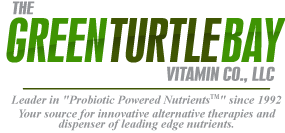How high can we go with doses of vitamin
|
Note: This article was written by Bill Sardi. The Green Turtle Bay Vitamin Co. is not a client of Bill Sardi and he is not familiar with our products but we respect him and feel that he is doing important work. Bill Sardi is a health journalist and president of Knowledge of Health, based in San Dimas, California. www.askbillsardi.com The world is on the precipice of a demographic challenge foreseen but not prepared for-the number of ageing populations. The growth of senior adults is rising so fast worldwide, to the tune of 800,000 a month,1 that the social burden of caring for an elderly population with chronic-age related diseases, conditions, and disabilities, will likely overwhelm caretaking capacities of advanced societies. Nutritional deficiencies are common among the aged, and the opportunity to utilize low-cost dietary supplements-namely vitamins and minerals-is appealing, compared with costly pharmaceutical drugs, which have a poor safety track record that compounds their social cost.2 In fact, an annual review of data collected from the Poison Control Centers of America reveals that vitamin and mineral supplements exhibit a good track record for comparative safety.3 The realization that adults in developed countries are not consuming the recommended five daily servings of plant foods, despite education programs, led the American Medical Association to change its stance on dietary supplements and to recommend multi-vitamins universally.4 The draft monograph for the US Codex Alimentarius being debated as part of the international GATT treaty (which would harmonize the dosage of vitamin supplements) states, “Some people need a vitamin-mineral supplement to meet specific nutrient needs.” Perhaps this statement should read, “Most, if not all, people at some stage of their life will need vitamin-mineral supplements to meet specific nutrient needs.” (for more information on CODEX) We can reach far beyond the prevention of deficiency diseases, such as pellagra, rickets, beri beri and scurvy, with use of higher dose vitamins and minerals. Dr. Bruce Ames has spread word around the world to increase awareness that nutrient deficiencies are harmful to DNA and shortages mimic radiation damage to genetic material.5 Ames now suggests optimizing vitamin and mineral intake through diet and multivitamin and mineral supplements.6 Outer Limits
There is a new road toward discovery, beyond minimal health, Recommended Daily Allowances (RDAs) and even Upper Limits (UL): It is the prospect of preventing chromosome breakage at the DNA protective level. For example, the intake levels of folic acid and vitamin B12 required to protect the human genome exceeds both the RDA and the new RDI. Approximately700mcg/day folic acid and 7mcg/day vitamin B12 would be appropriate for genomic stability in young adults.7 The RDAs have undergone little change since they were established after WWII. They were aimed at preventing nutritional deficiencies, not at delaying or preventing chronic age-related disease, which is now the mandate.8 Vitamin and mineral supplements now are highly recommended and relatively safe-but at what dose, since every substance on the planet has the potential to cause side effects? The tolerable Upper Limit (UL) has been defined as the highest level of daily nutrient intake that is likely to pose no risks of adverse health events to almost all individuals inn the general population. This means the “perfectly safe dose.” But the UL is presented as though it approaches toxicity, which it doesn’t. John Hathcock, of the Washington, DC-based Council for Responsible Nutrition, writes that “misinterpretation of ‘safe and adequate’ to mean ‘safety limit’ would impose restrictions on vitamin and mineral intakes that are not needed to ensure safety.”9 The ULs are established in a backward manner. First, the Lowest Observed Adverse Effects Level is determined. This is the lowest dosage at which adverse events have been reported. Then dosage is reduced to a level at which ‘no adverse effects have been observed in the individuals studied.’ Then the UL is established from these above figures, deducting an arbitrary safety factor. The UL therefore ends up nowhere near adverse effect levels. For example, the UL for vitamin D is 2,000 IU. The toxic level for daily consumption, which would require prolonged intake to achieve, is 40,000IU. Total body exposure to summer sun for one hour at noon at mid-latitude produces 10,000IU vitamin D, so 2,000IU supplements could hardly be called ‘potentially toxic.’ Recent studies indicate blood levels are not raised to detectable levels until 4,000IU are consumed. And yet the US FDA restricts vitamin supplements to no more than 1000IU vitamin D per pill. The UL for vitamin C is 2,000mg, with blood saturation point set at 240mg. However, even when saturation has been achieved in the blood plasma, the provision of 2,000mg vitamin C further increases the levels of vitamin C in the aqueous fluid of the human eye. Higher levels of vitamin C are required in the aqueous fluid of the eye than in the blood circulation because the human eye is transparent and prone to harm by products of oxidation (hydrogen peroxide) emanating from exposure to solar ultraviolet radiation. Much higher levels of vitamin C are required to prevent cataracts than to prevent scurvy. In a 1991 study conducted at the USDA Human Nutrition Research Center on Aging at Tufts University in Boston, researchers found ‘striking differences’ in ocular levels of vitamin C among older adults who consumed 148mg vitamin C from their daily diet compared with adults who took 2,000mg/day in supplements. The level of vitamin C in the focusing lens and aqueous fluid of the eye increased by 22 to 32 per cent with consumption of 2,000mg/day vitamin C supplementation, which protects against cataracts.10 The daily amount of vitamin C required to prevent cataracts ranges from 300-2,000mg (the equivalent of 6 to 30 oranges), which exceeds the National Academy of Science’s recommended five servings of fruits and vegetables which is 200-250mg. Yet, 2,000mg of vitamin C is considered ‘risky.’11 The National Academy of Sciences’ decision to set 200mg vitamin B6 as the “No Observed Effects Level’ flies in the face of a recent European effort to restrict vitamin B6 to no more than 10mg in food supplements, which has been roundly criticized.12 To restrict the dosage of vitamin B6 to 10mg would eliminate its recent discovery as an inexpensive antihypertensive agent.13 Why Are levels Set so Low?
There is concern that UL will be intentionally set at levels below therapeutic dosages. Consumers are gradually becoming aware that pervasive pharmaceutical interests may sway ‘upper tolerable limits’ in food supplements so they will not compete with prescription drugs. The public also is aware that the biological action of many prescription drugs can be duplicated with nutritional supplements and that the therapeutic effect of many nutrients depends upon dosage. Even when adverse effects occur, many are trivial and reversible. The UL doesn’t inform consumers of the severity of the adverse reaction. Examples of reversible side effects are neuropathy from high-dose vitamin B6 (pyroxidine), nausea from high-dose iron, facial flushing from high-dose niacin, and headaches and breast tenderness from high-dose vitamin E. The concept of establishing ULs runs contrary to the discovery that consumer access to high-dose vitamin and mineral supplements may boost Western health care standards and decrease the strain on Western economies of health care for ageing populations. |
||||||||||||||||||||||||||||
REFERENCES |
||||||||||||||||||||||||||||
|




